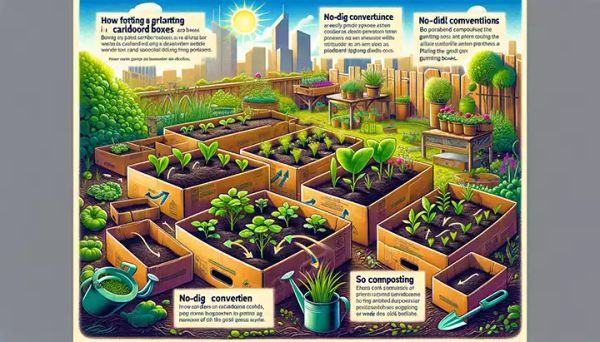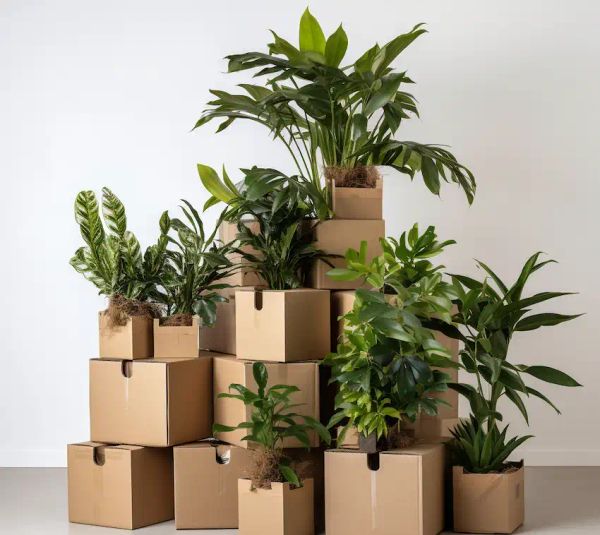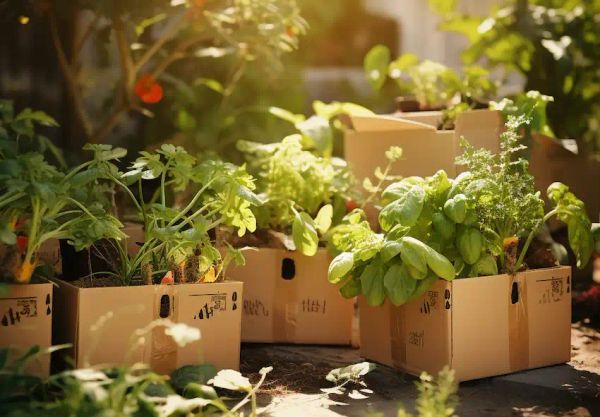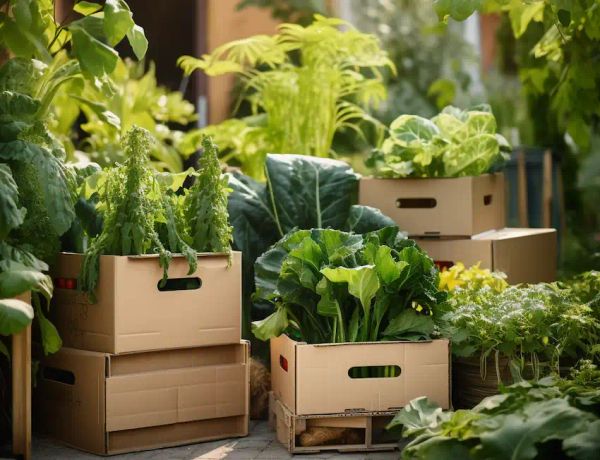Gardening is a favorite pastime for many, but it can come with its fair share of challenges. Whether you’re dealing with poor soil quality or limited ability to dig, there’s a simple and innovative solution gaining popularity among gardeners – planting in cardboard boxes!

This no-dig approach offers numerous benefits and can be a game-changer for your gardening practice. Let’s explore why you should consider using cardboard boxes for planting and learn how to set them up.
Why Choose Cardboard Boxes?
No-Dig Convenience: Say goodbye to back-breaking digging. Planting in cardboard boxes eliminates the need for traditional soil cultivation, making it perfect for those who prefer to work smarter, not harder.

Soil Quality Improvement: If you’ve been struggling with poor soil, cardboard boxes offer an immediate solution. Fill them with nutrient-rich soil to provide your plants with the best start, without the hassle of amending the existing ground.
Natural Composting: Cardboard decomposes over time, enriching the soil beneath with organic matter. By layering new boxes over old ones annually, you’ll create a composting system that continually revitalizes your soil.

Weed Suppression: The cardboard acts as a natural weed barrier, significantly reducing the need for manual weeding and chemical herbicides. Spend less time pulling weeds and more time enjoying your garden.
Pest Management: Elevating your plants in cardboard boxes adds an extra layer of protection for vulnerable seedlings. Certain pests can be deterred, giving your plants a better chance to thrive.

How to Set Up Your Cardboard Box Garden
To get started with your own cardboard box garden, here’s what you’ll need and the steps to follow:
Materials Needed:
- Large cardboard boxes (remove any plastic tape or labels)
- High-quality potting mix or garden soil
- Compost or well-rotted manure
- Seeds or seedlings of your choice
- Mulch (optional for moisture retention)
Steps:
Location Selection: Choose a sunny spot for your garden. Most vegetables and herbs require at least 6-8 hours of direct sunlight daily.
Prepare Your Boxes: Open the boxes and position them in your desired garden area. If the bottoms are still intact, remove them to allow for root growth and better drainage.
Layer the Bottom: For added weed control, place a layer of cardboard beneath the boxes before setting them in place.
Fill With Soil: Create a nutrient-rich environment by mixing the potting soil with compost or manure. Fill the boxes with this mixture, leaving a couple of inches of space from the top.
Planting: Follow the specific spacing and depth requirements for your seeds or seedlings. Consider companion planting to maximize space and promote plant health.
Watering: Give your new plants a good watering. Keep in mind that cardboard can absorb moisture, so you may need to water more initially until the system stabilizes.
Mulching (Optional): Apply a layer of mulch on top of the soil to retain moisture and further suppress weeds.
Maintenance: Monitor moisture levels, especially during hot, dry periods. The cardboard will naturally decompose over time, and that’s part of the process.
Next Season Preparation: Once the growing season ends, you can leave the boxes in place. During winter, they’ll start breaking down. When spring arrives, lay new boxes over the old ones, fill them with fresh soil, and start again.
Gardening with cardboard boxes is not only environmentally friendly but also adaptable to various challenges, like poor soil quality or physical limitations. By recycling materials and ensuring soil health without harmful chemicals, this approach aligns with sustainable practices. Whether you’re a seasoned gardener or a beginner, planting in cardboard boxes offers a simple yet effective way to enjoy bountiful harvests with minimal environmental impact. So, why not give it a try?




